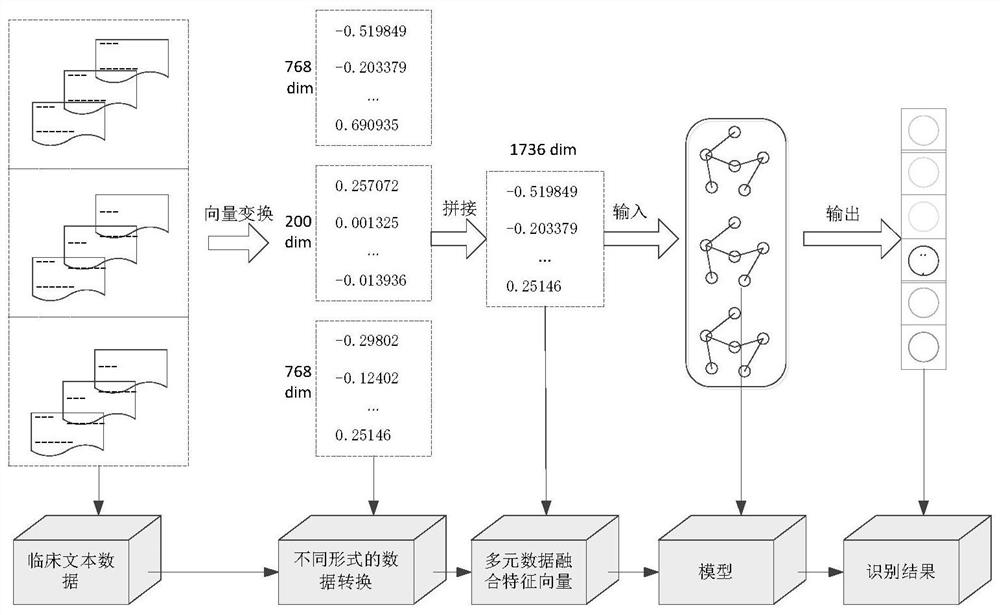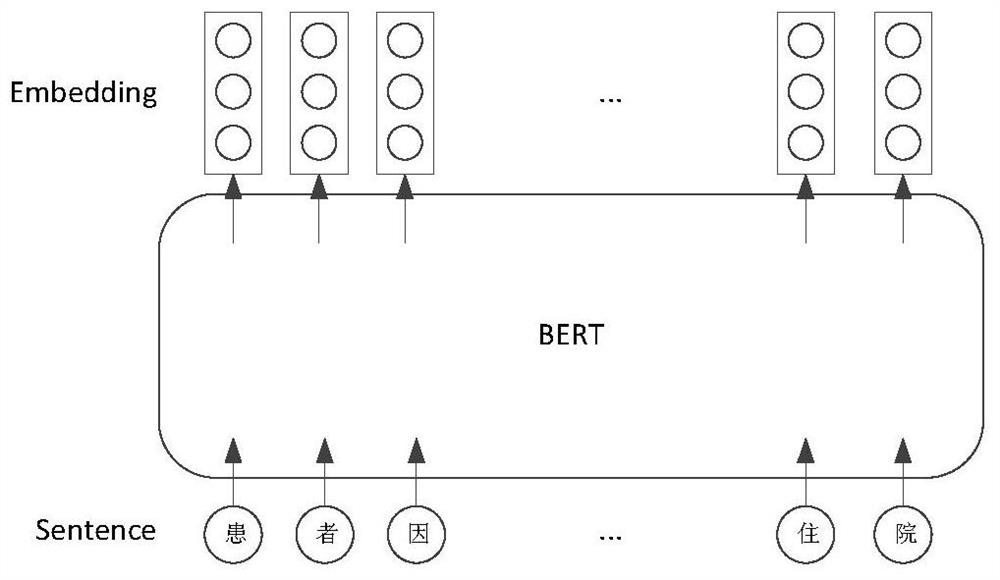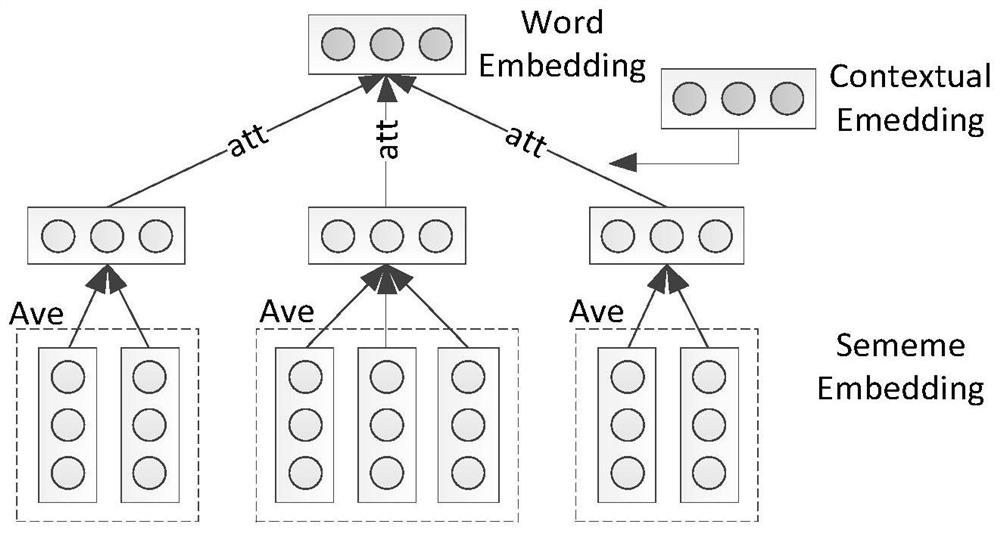Chinese medical named entity identification method and system, storage medium and equipment
A named entity recognition, Chinese technology, applied in the direction of instruments, biological neural network models, electrical digital data processing, etc., can solve problems such as word segmentation difficulties, achieve the effect of enriching semantics, improving accuracy, and reducing ambiguity
- Summary
- Abstract
- Description
- Claims
- Application Information
AI Technical Summary
Problems solved by technology
Method used
Image
Examples
Embodiment 1
[0043] refer to figure 1 , a kind of Chinese medical named entity recognition method of the present embodiment, it comprises:
[0044] S101: Obtain clinical text data.
[0045] Specifically, clinical text data is obtained from electronic medical records. Electronic medical records are a collection of patient health information, including clinical texts, drug records, disease diagnosis records, physiological indicators, laboratory results, non-written records (medical images, electrocardiograms and audio recordings, etc.), surgical history, genetic medical history and medical expenses, etc.; According to the content in the plain text document of the electronic medical record, its entity content and corresponding location are extracted. The entity categories include: disease and diagnosis, examination, inspection, operation, drug, and anatomical part.
[0046] S102: Converting the clinical text data into character embedding representations of medical texts, medical concept emb...
Embodiment 2
[0105] refer to Figure 7 , the present embodiment provides a Chinese medical named entity recognition system, which includes:
[0106] A data acquisition module, which is used to acquire clinical text data;
[0107] The fusion feature module is used to convert clinical text data into medical text character embedding representation, medical concept embedding feature vector and cross-language Chinese embedding representation and splicing to obtain multivariate data fusion feature vector;
[0108] An entity recognition module, which is used to input multivariate data fusion feature vectors into a multi-graph-based named entity recognition model to identify Chinese medical named entity types;
[0109] Among them, the named entity recognition model based on multi-graph includes multi-graph network and LSTM-CRF model. The multi-graph network is used to receive the text graph composed of multivariate data fusion feature vectors as nodes, output the final state of the node and send ...
Embodiment 3
[0113] This embodiment provides a computer-readable storage medium on which a computer program is stored. When the program is executed by a processor, the steps in the method for recognizing Chinese medical named entities as described in the first embodiment above are realized.
[0114] This embodiment introduces an entity dictionary, embeds semantics into entity representation, and can better understand the rich grammatical and semantic information in sentences; a set of compact medical concepts is learned as a link between hidden semantics and observed medical evidence Bridge, extracting fine-grained semantic information, reducing the ambiguity of polysemous words; adopting cross-lingual knowledge transfer method, transferring high-resource language knowledge to Chinese medical texts, supplementing knowledge, supervising Chinese named entity recognition tasks with the help of external language knowledge; extracting medical The multi-granularity features of the text fuse word ...
PUM
 Login to View More
Login to View More Abstract
Description
Claims
Application Information
 Login to View More
Login to View More - R&D
- Intellectual Property
- Life Sciences
- Materials
- Tech Scout
- Unparalleled Data Quality
- Higher Quality Content
- 60% Fewer Hallucinations
Browse by: Latest US Patents, China's latest patents, Technical Efficacy Thesaurus, Application Domain, Technology Topic, Popular Technical Reports.
© 2025 PatSnap. All rights reserved.Legal|Privacy policy|Modern Slavery Act Transparency Statement|Sitemap|About US| Contact US: help@patsnap.com



